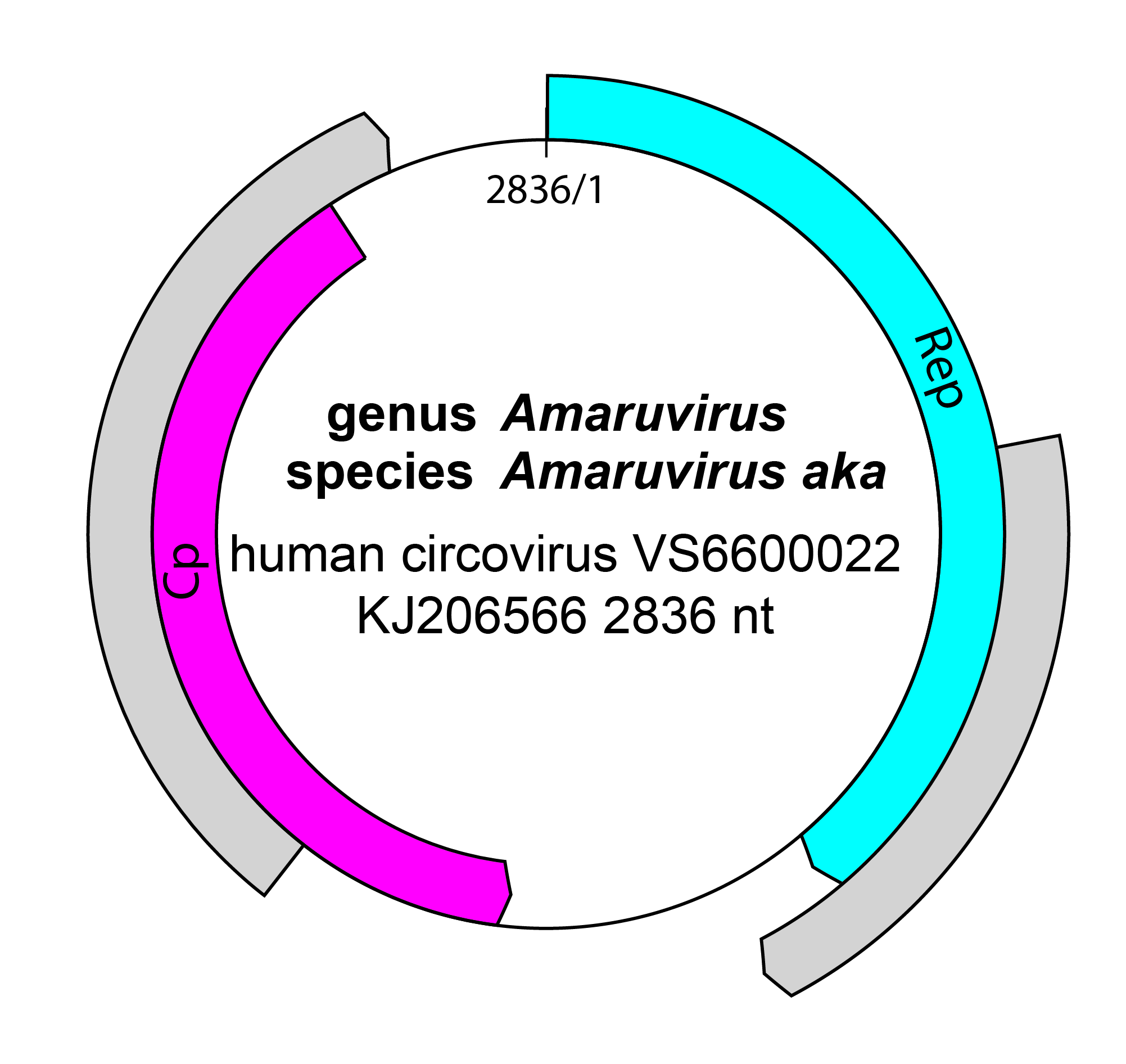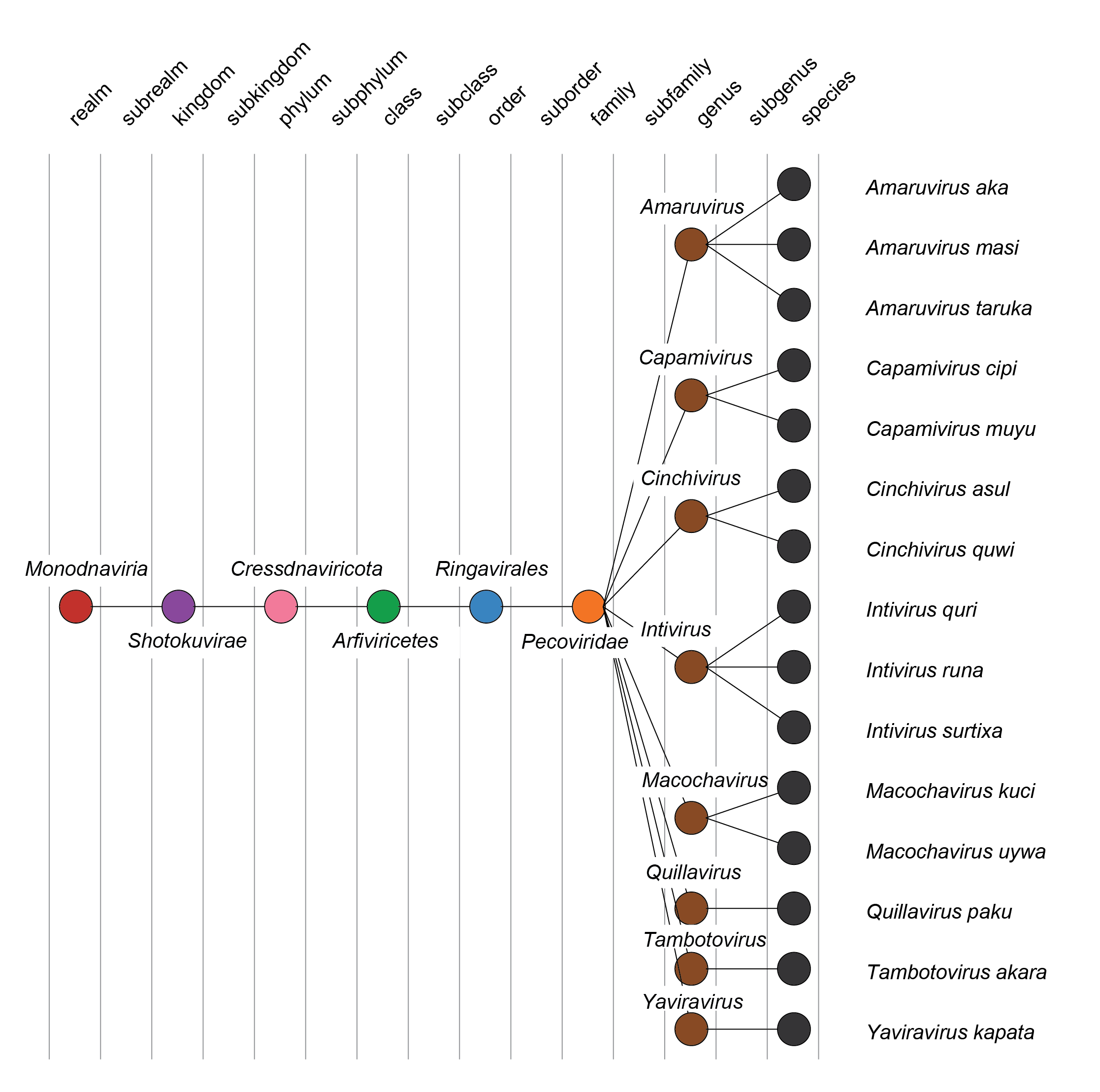Family: Pecoviridae (Interim Report)
This is a summary page created by the ICTV Report Editors using information from associated Taxonomic Proposals and the Master Species List.
Edited by: Arvind Varsani
Posted: December 2024
Summary
The family Pecoviridae includes ssDNA(+/-) viruses of vertebrates (Table 1 Pecoviridae). The family Pecoviridae was established in 2024 (Master Species List #39).
Table 1 Pecoviridae. Characteristics of members of the family Pecoviridae.
| Characteristic | Description |
| Example | human circovirus VS6600022 (KJ206566), species Amaruvirus aka, genus Amaruvirus |
| Virion | Unknown |
| Genome | ssDNA(+/-), 1 circular segment, 2.7–3.1 kb (Figure 1 Pecoviridae) |
| Replication | Rolling-circle, SF3 helicase |
| Translation | Unknown |
| Host range | Vertebrates |
| Taxonomy | Realm Monodnaviria, kingdom Shotokuvirae, phylum Cressdnaviricota, class Arfiviricetes, order Ringavirales: 8 genera, 15 species (Figure 2 Pecoviridae) |
 |
| Figure 1 Pecoviridae. Genome organisation of human circovirus VS6600022, a member of the family Pecoviridae. Boxes indicate open reading frames as annotated on GenBank accession KJ206566. |
 |
| Figure 2 Pecoviridae. Relationships of the taxa connected to the family Pecoviridae. |
Derivation of names
Amaruvirus: from Tupac Amaru, the youngest son of Manco Inca
Capamivirus: from the Quechua Capac Raymi, the ritual month including the December solstice
Cinchivirus: from Cinchi Roca, the second Inca, son of Manco Capac
Intivirus: from the Quechua (Cuzco dialect) inti, meaning sun
Macochavirus: from the Quechua Mamacocha, meaning Mother Lake (the Pacific Ocean)
Pecoviridae: from Peruvian stool-associated circo-like viruses; the suffix viridae for family taxa
Quillavirus: from the Quechua quilla, meaning moon
Tambotovirus: from Tambotoco, the cave from which the first mythical Incas emerged
Yaviravirus: from Yavira, a shrine on the slope of Picchu mountain in Peru

